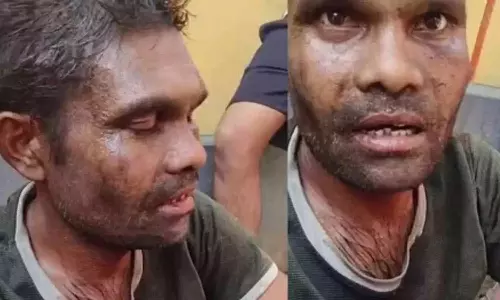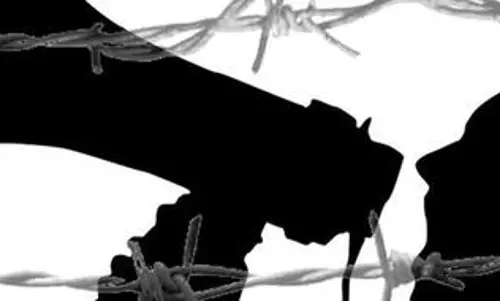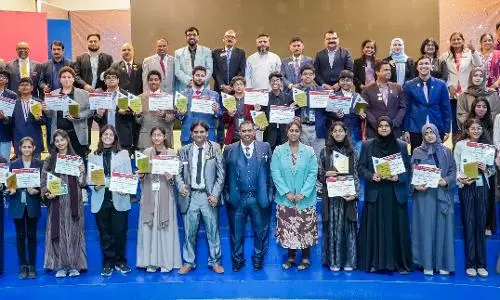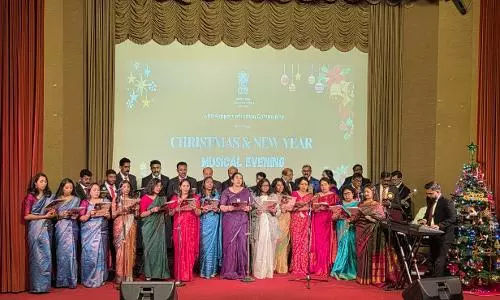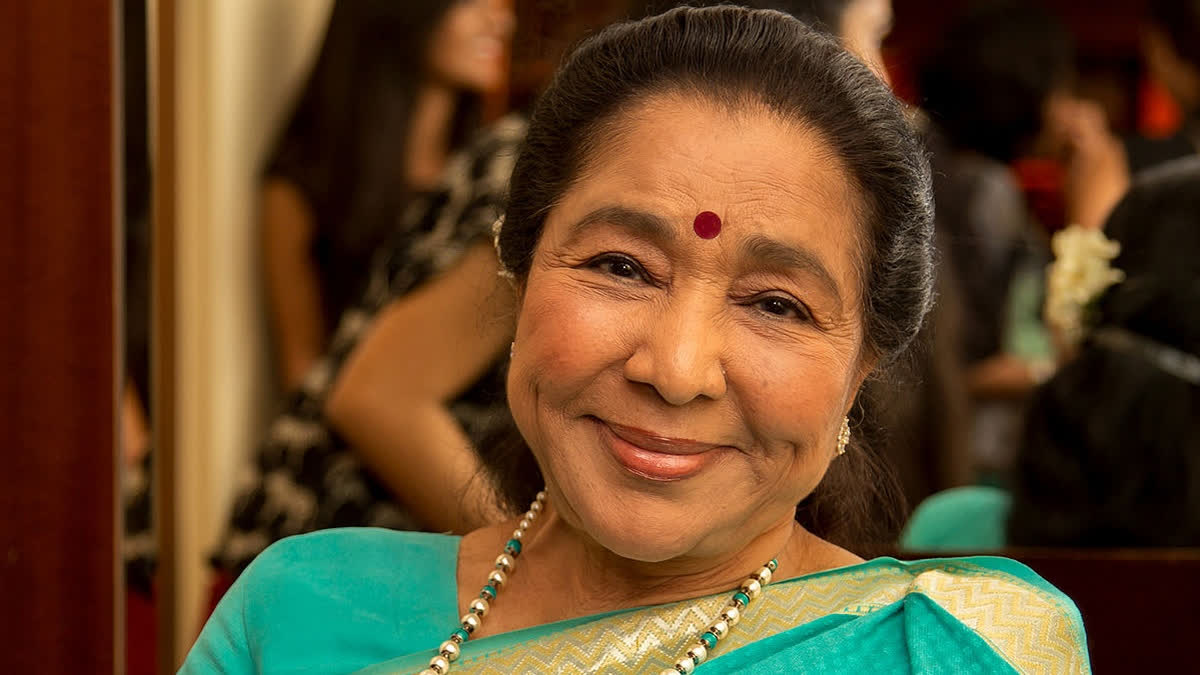
'Chura liya hai tumne': Asha Bhosle & R.D. Burman's melodious journey, discordant end
text_fieldsMumbai: Intrinsically talented, both separately and jointly, gave a new direction to Hindi film music.
But to achieve this, Asha Bhosle and Rahul Dev Burman had to surmount a major "hurdle" -- creating a new identity distinct from their illustrious and established kin: elder sibling Lata Mangeshkar for Asha and father Sachin Dev Burman for Rahul Dev Burman.
And both succeeded -- with a combination of luck, support, their own undeniable virtuosity, and above all, their first joint effort.
Asha Bhosle -- who is still going strong at 90, having worked with four generations of music composers from O.P. Nayyar to A.R. Rehman -- added a sensuous allure and element of forthrightness for the Hindi film heroine, without becoming risque or boisterous, even as Burman adroitly used pop and jazz to good effect in electrifying film music -- bringing the age of Elvis Presley and the Beatles to India.
Rejected at a trial for a film in 1947 as the sound recording engineer "did not like" her voice -- as of her co-singer, who happened to be Kishore Kumar! -- Asha slowly persevered over the next decade as the voice of supporting actors, as her sister and other established singers like Suraiyya, Geeta Dutt and Shamshad Begum had left no space for others.
It was only in the late 1950s that two top music directors gave her a break -- Nayyar, for he did not work with Lata Mangeshkar and the elder Burman, who had a falling out with Asha's elder sister.
"Le ke pehla pehla pyar" ("CID"; 1956), where Asha stood her ground with main singers Mohammed Rafi and Shamshad Begum, made her a voice to look out for; B.R. Chopra's "Naya Daur" (1957), where she first sang for the heroine, cemented her as a viable voice.
It also made her a permanent feature of Chopra's films -- with gems like "Aage bhi jaane na tu" and "Hum jab simatke aapki bahon mein aa gaye" ("Waqt"; 1965), and "Uljhan suljhe na rasta sujhe na" ("Dhund"; 1973) -- among those standing out.
S.D. Burman used Asha's voice to good effect for Madhubala in Kishore Kumar's "Chalti ka naam gaadi" (1958) -- "Main sitaron ka taraana" and "Haal kaisa hai janaab ka" -- as well as in "Kaala Pani", 1958 ("Achha ji main haari, chalo maan jao na"), "Kaala Bazaar" (1960), "Bombai Ka Babu", 1960 ("Deewana mastana hua dil"), "Sujata", 1959, and "Teen Deviyaan", 1965 ("Arre yaar meri tum bhi ho ghazab").
Meanwhile, R.D. Burman worked as an assistant to his illustrious father in the latter part of the 1950s, right from his teenage days, and it was only in 1959 did he get his first break -- for a film to be made by Guru Dutt's assistant. It got shelved soon after being launched. Fate was still kind to him and comedian Mehmood, who after being turned down by the senior Burman on his film offer, chose the son instead.
"Chhote Nawab" (1961) was R.D. Burman's first solo movie and though it did not make waves, he was a music composer in his own right. His hour would strike with "Teesri Manzil" (1966) -- for which hero Shammi Kapoor, producer Naseer Hussain and director Vijay Anand sought to take the credit for his selection, though Burman himself said that it was lyricist Majrooh Sultanpuri who had recommended him.
And of the film's soundtrack, the duets "O haseena zulfonwali jaan-e-jahan", "O mere sona re" and "Aaja aaja, main hoon pyar tera" showcased Asha ably complementing Rafi -- and female partners (Helen in the first and heroine Asha Parekh in the last two), who could shimmy as energetically as "Swinging Shammi".
It was also the first successful collaboration between Asha and R.D. Burman and laid the ground for their later melodic milestones -- "Piya tu ab to aaja" ("Caravan", 1971), the evergreen hedonistic youth anthem "Dum maro dum" ("Hare Rama Hare Krishna", 1971), the uninhibited "Duniya mein", with Burman himself singing ("Apna Desh", 1972), "Bhali bhali si ek soorat" ("Buddha Mil Gaya", 1971), that eternal romantic ballad "Chura liya hai tumne" ("Yaadon Ki Baaraat", 1973) and the bold qawwali "Hai agar dushman" ("Hum Kisi Se Kam Nahin", 1977).
Asha and R.D. capped their successful 1970s by marrying in 1980 -- the second time for both of them.
But it was not always happily ever after for them -- as Asha moved from her cabaret/love numbers to more nuanced stuff, such as the ghazals of "Umrao Jaan" (1981), with the composer Khayyam convincing her to lower her voice by half a note to create magic, R.D. Burman could not as easily jettison his westernised image, where younger competitors like Bappi Lahiri were gaining ground.
And a rift started emerging as Asha was too professional not to sing for Lahiri -- the solos "Jawaani jaan-e-man" and "Raat baaki, baat baaki" and the duet "Aaj rapat jaye" from "Namak Halal" (1982) were a prime example.
Later In the 1980s, R.D. Burman and Asha woould reinvent themselves with more subtle numbers like "Mera kuch saaman", "Khaali haath shaam aayi hai" and "Katra Katra" ("Ijazat", 1987), times had changed for both.
R.D. Burman grew increasingly disillusioned as he was not getting much work after some films with his music bombed, Asha also had an enforced sabbatical as new filmamkers chose new singers, notably Alka Yagnik and Kavita Krishnamurthy.
"1942: A Love Story" (1994) showed R.D. Burman still had some spark left, but, sadly, it was a posthumous achievement. And tellingly, he did not use Asha in what would turn out to be his swan song!
Yet, Asha gained a fresh lease as emerging maestro A.R. Rehman chose her to sing for Urmila Matondkar in "Rangeela" (1995) and at 62, she did full justice for the 21-year-old actress.
She continued to make a mark -- take "Taal" (1999) and "Lagaan" (2001), for instance -- and as the years progressed, she did not stop diversifying her repertoire.
Asha's last most memorable venture was with former Australian Test cricketer Brett Lee, with whom she sang "You're The One for Me" ("Haan Main Tumhara Hoon"), in her 2007 album, "Asha and Friends Vol. 1".




